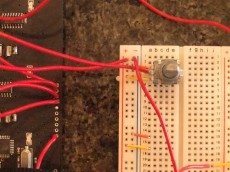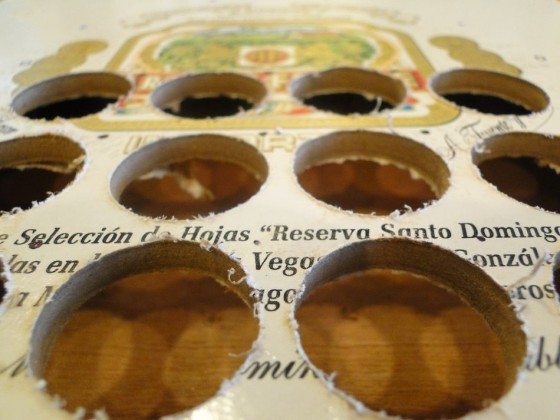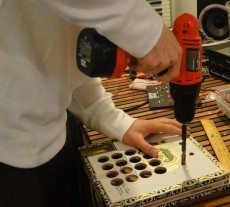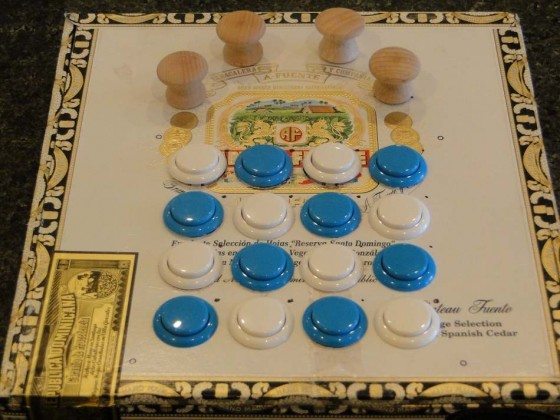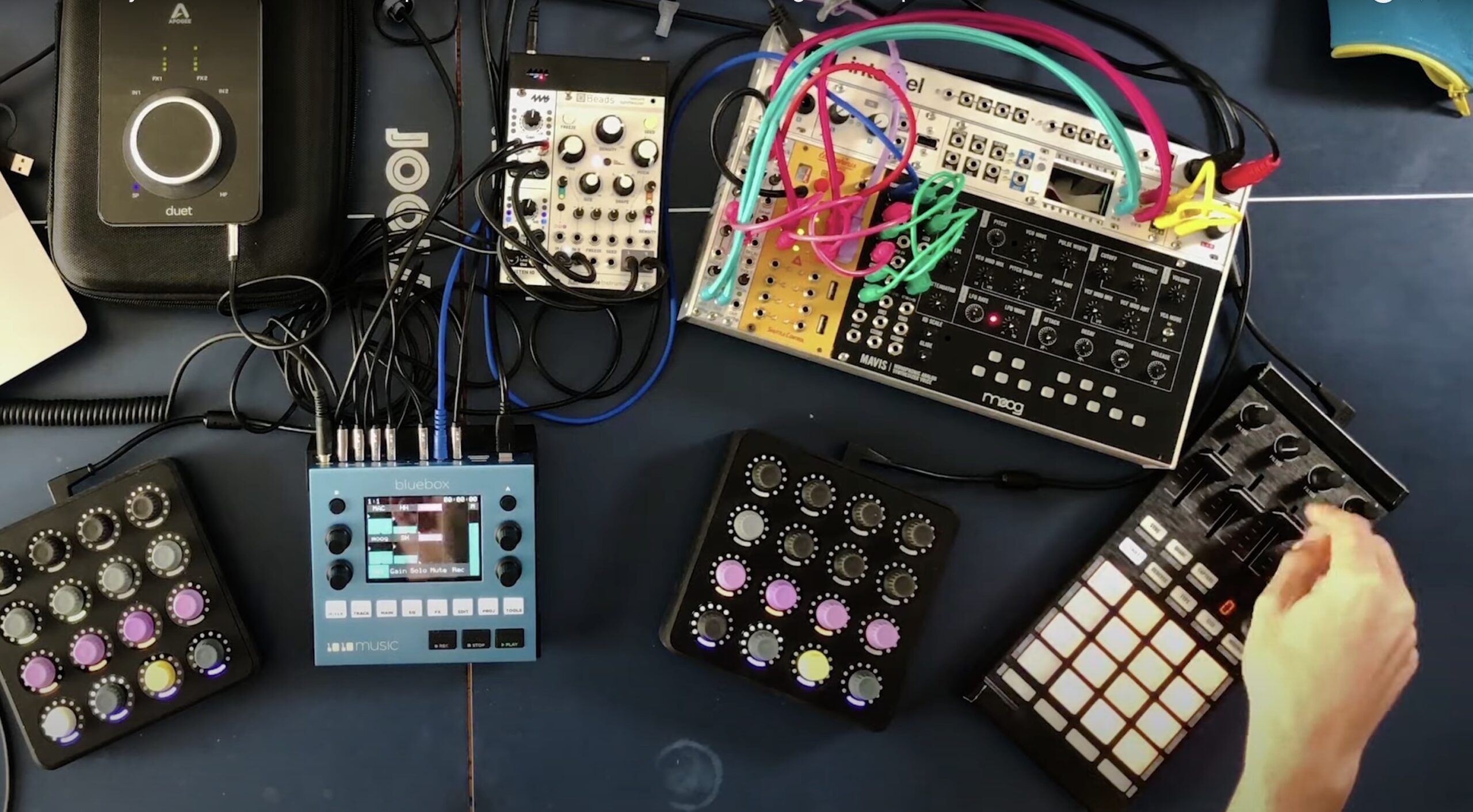Tired of the plastic mainstream controller offerings, I decided to take things into my own hands and explore the world of DIY controller construction. As most of our readers will know, the Midifighter DIY kit features optional analogue inputs that are ripe for modification and an easy place for the newbie controller maker to start. I decided to dedicate my mod to the birthplace of salsa, Cuba, by enclosing the results in a cigar box and toping off the theme with some tasty wooden knobs. This article will demonstrate how to do assemble your own personalized controller that is sure to catch eyes and requires just a few basic tools. VIVA LA MODIFICATION!
Step 1: Choose your weapons
The Midifighter comes with expansion slots for 4 analog and 4 digital controls. Possible analog examples include potentiometers, faders and even a modern game-console joystick. Knobs that have a physical start and end point are called potentiometers or “pots,” while endless knobs are called encoders. Digital controls examples include switches, rotary encoders or touch strips. For this mod, I choose to add four panel mounting pots for expression. The panel mounting style of pots mean that you can secure them to the top sheet, which is easier for entry-level modders.
The best part about making your own mod is that you can choose exactly what kind of components fit your personal style. At the end of this article we list various online locations where you can purchase components, and the more adventurous may choose to take components from old appliances and boards.
Step 2: The MIDI Silo
Now that you know what you want in your mod, it’s time to consider how to house it. A good enclosure will secure your new parts, minimize broken connections and maximize its visual appeal. There are many choices in enclosures, but here are a few important factors to take into consideration:
- Will the Midifighter board and components all fit? The PCB is about 5.75″ (14.5cm) square
- Will the material be safe or interfere with the components? Metal, wood and plastic are all good choices, but one should be aware of the operating temperature of the circuit (5 volts) and any chance of flammability.
- Will it attract the adoration of the opposite sex? (Optional and unlikely.)
Step 3: Plotting Trajectory
Before you start soldering, it’s a good idea to test out your components and get familiar with the wiring concepts. I recommend you use a breadboard (shown above) to do a mock-up before assembling the controls in the final box.
- Cut about 20, 4″ pieces of your wire and strip both ends of the wires by 1/4″.
- On the underside of the PCB (Midifighter Board), you will see a printed list of inputs on the right side: GRD, D4-D1, A4-A1 and 5v.
- Pull out your breadboard and you will see a negative (-) and positive (+) column on at least one side of the breadboard.
- Connect a wire from the GRD port of the PCB to the 1st row of the negative column on the breadboard.
- Now, connect a wire from 5v on the PCB to the positive column of the breadboard.
Step 4: Arming the warhead
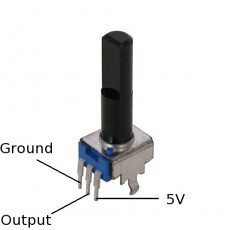 The image left shows the connection points of the pots. Some pots are different, so check the specs to confirm.
The image left shows the connection points of the pots. Some pots are different, so check the specs to confirm.
- Insert the pots into the breadboard as shown in the photo above.
- Bridge the negative column on the breadboard to the “ground” peg of your pot.
- Bridge the positive column to the “5v” peg of the same pot.
- Insert a wire from the output peg row to one of the analog inputs
- Repeat 1-4 for all pots
Existing Midifighter owners will have to upgrade their firmware to the latest version (see the forum post) to use the analog controls. With the new firmware installed, hold down the top-left button (nearest the USB connector) while plugging in the USB cable to drop the MF into “Menu Mode”. You can then enable MIDI events from the analog inputs using option 7. Remember to exit through the top-level menu to save the settings permanently. Check out the readme to get a more detailed explanation on menu mode and turning analog control on.
If all is well, your new controls should be MIDI mappable. The analog controls appear as MIDI cc 16-19 and can be assigned through your program of choice using MIDI learn; just hit Learn and twist the pot. If they are not yet MIDI mappable, check the polarity and current on the breadboard and pots using a multimeter (see below). If everything is working properly, you are ready to begin installing the components.
Step 5: Dig the Missile Sites
- Download the top plate template of the Midifighter.
- Print this document out on paper and use it as a guide to cut the holes for your arcade buttons.
- Carefully mark the center point of each hole with a sharp object, and then use a 1″ spade bit to drill out the arcade holes and a smaller bit for the light pipes.
- For potentiometers, I used a 3/8″ bit to cut holes for the pots to push through.
Step 6: Installing the Payload
Time to roll up the sleeves and turn up the heat with a soldering iron. If that sounds daunting, don’t worry- there are many good online soldering tutorials.
- Mount all of the pots to the box and snap the arcade buttons into the PCB
- Run one single GRD and one + 5V wire to your first pot. Now bridge two wires from that pot to the next pot’s GRND and +5. In this way all of the pots can share both power and ground plus your wiring stays nice and organized.
- Solder each pots output wires to one of the analog inputs to the PCB.
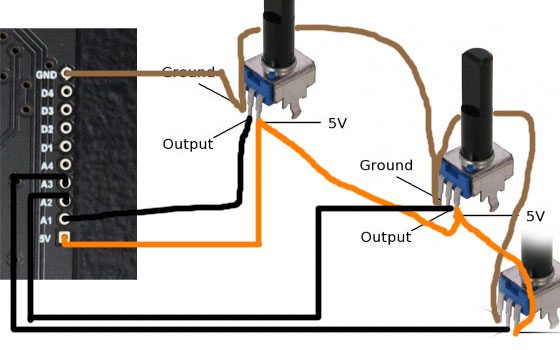
Insiders Tip: If you see yourself modding your Midifighter more than once, think about getting a set of male and female “headers” , and solder the female ones to your Midifighter PCB expansion port. This will give you the ability to plug and unplug wires instead of soldering directly to the PCB.
The Blueprint
A Midifighter DIY Kit
4 10k pc mount potentiometers — “pots” come in many flavors of resistance or Ohms (from 5k to Mega Ohms), to get a feel for the difference look here
A breadboard –breadboards are typically used for prototyping, but since they do not require soldering and distribute power they can be a good choice for a beginner mod.
At least 4 feet of 24′-28′ gauge wire – gauge determines how much current a wire can carry
A 15-30 watt soldering iron/gun – the modder’s prime weapon. You may find it useful to buy or (make with a coathanger, AYOR!)
Rosin core solder – soldering used to be a two part process: heating solder with flux and then applying. Rosin core has flux built-in.
An electric drill, 1″ and 1/3″ drill bits
A cigar box — found on eBay or local tobacconist
4 wooden drawer handles – undrilled is best for this project
Wire strippers (optional, recommended)
Jumper wire (optional)
Multimeter (optional) – digital multimeters are cheap and useful for checking continuity in your wiring and parts. Make sure they measure voltage, resistance and current and are Class 1, component class.
This is by no means a definitive list, but should get you started in the right direction. In particular, using a breadboard is optional. Ordering parts online is the most cost effective way to go as retail stores inflate prices by as much as 300%. A good source for our European customers can be found here.





